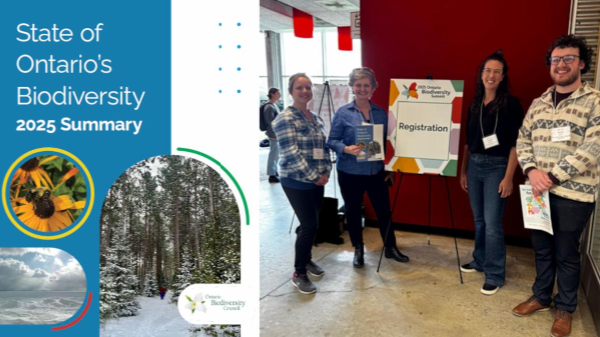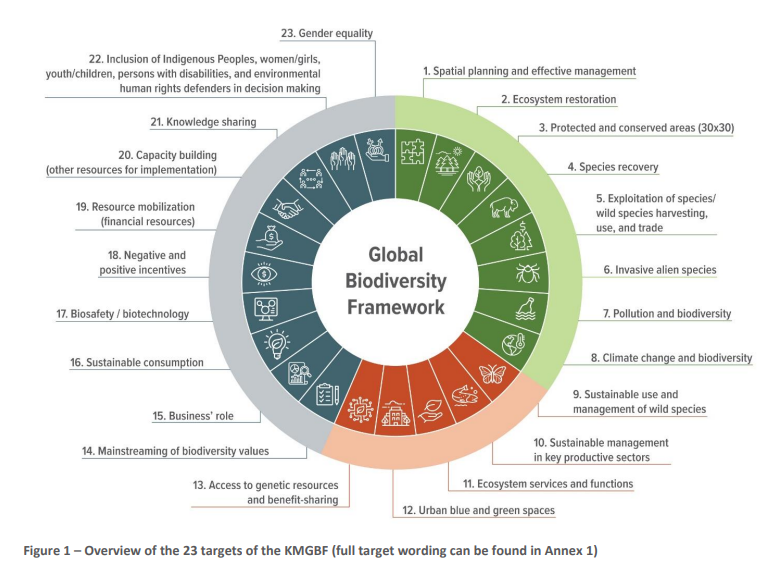
The impacts of the continued loss of biodiversity and climate change on our livelihoods and communities are already visible.
For over two decades, FOCA has been a member of the Ontario Biodiversity Council (OBC). This group of environmental, conservation, government, academic and indigenous organizations, natural history institutions, and industry work together to support biodiversity conservation in Ontario. The OBC regularly holds a Biodiversity Summit, produces the “State of Ontario’s Biodiversity” Report every 5 years, and led to the development of the Ontario Biodiversity Strategy.

May 21-22, 2025 in Peterborough – the FOCA staff were out in force to participate with 100 colleagues in the Ontario Biodiversity Summit, titled “Our Turning Point for Nature” as part of 20th anniversary celebrations of the Ontario Biodiversity Council. Download the extensive Event Summary (PDF, 32 pages) and the 2025 State of Ontario’s Biodiversity report (PDF, 17 pages).
OTHER RECENT NEWS:
December 16, 2024 – FOCA joined 60 partner organizations who wrote to the Government of Ontario this week, calling for action to address biodiversity loss, and a commitment to the protection and restoration of nature across Ontario. Read the letter (PDF, 9 pages) which calls on the Government to implement the existing provincial Biodiversity Strategy, and align it with federal activities in the 2030 Nature Strategy.
November 2024 – eDNA in the news: Scotland Leads the Way: National Habitat Condition Monitoring using State of the Art Machine Learning & eDNA Data (Nature Metrics). QUOTABLE: “The results showed that eDNA data could classify sites by habitat status (e.g., degraded vs. restored) and map species distributions across regional scales cost-effectively. For marine environments, eDNA benchmarked favorably against traditional methods for assessing sediment quality.”
For more about the potential of eDNA data, visit FOCA’s IsampleON webpage.
June 13, 2024 – the federal Minister of Environment and Climate Change has released Canada’s 2030 Nature Strategy: Halting and Reversing Biodiversity Loss in Canada (download PDF, 181 pages). The report notes that “our economies are embedded in nature, not external to it” and that healthy, biodiverse ecosystems are vital to our lives and livelihoods in Canada.
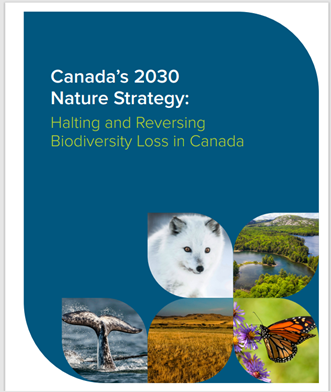
The strategy is built around the target framework adopted at the December 2022 UN convention on biological diversity (source of the image at the side), including topics FOCA speaks about regularly including ecosystem restoration, preventing invasive species, sustainable use of wild spaces, and mainstreaming of biodiversity values, among many others.
May 24, 2024 – the Ministry of the Environment, Conservation and Parks is creating draft government response statements for 4 species at risk under the Endangered Species Act, to continue to help preserve Ontario’s biodiversity. The species at risk are: Hudsonian Godwit (pictured at the side; image credits: Mike Burrell via Ontario.ca); 2 distinct populations of Lake Whitefish (Opeongo Lake); and Suckley’s Cuckoo Bumble Bee. Read the release & related materials, and submit comments on the draft Ministry responses via the ERO posting by August 8, 2024.
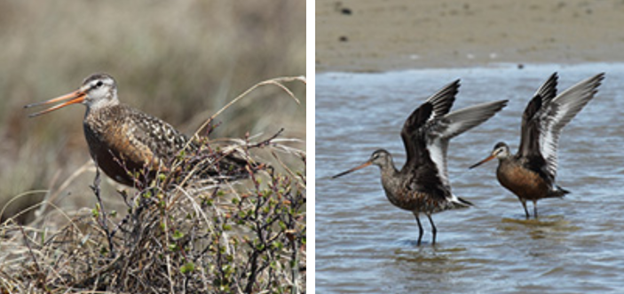
May 22, 2024 – today is International #BiodiversityDay and we join the United Nations in celebrating biodiversity! This year’s theme is “Be Part of the Plan” and FOCA encourages you help stop and reverse biodiversity loss for the good of humanity. Some ways you can help:
- eat local and in-season, reduce waste, compost, repair & reuse
- reduce your use of chemicals (pesticides, detergents, cosmetics) and seek out environmentally-friendly alternatives
- naturalize your waterfront shoreline to maximize its potential to support biodiversity!
April 25, 2024 – Conservation slowing biodiversity loss, scientists say (BBC News)

Biodiversity is… the variety of life on earth, and is essential to sustaining the living systems we depend on for our health, economy, food and other vital services.
All species, including humans, rely on each other to survive. Humans depend, directly and indirectly, on biodiversity for clean air and water, food and fibre, and amazing outdoor experiences like hiking, fishing, and canoeing.
snapping turtle image courtesy Andy Metelka
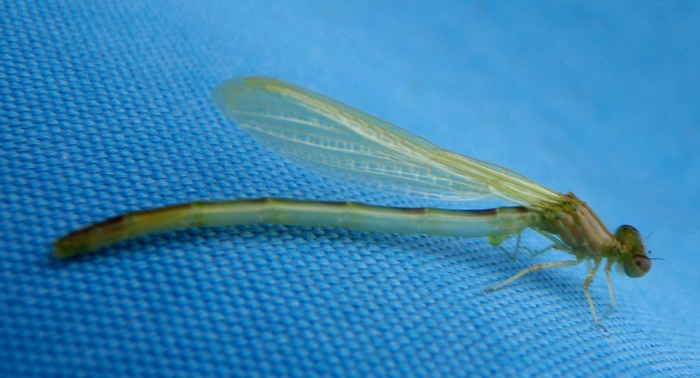
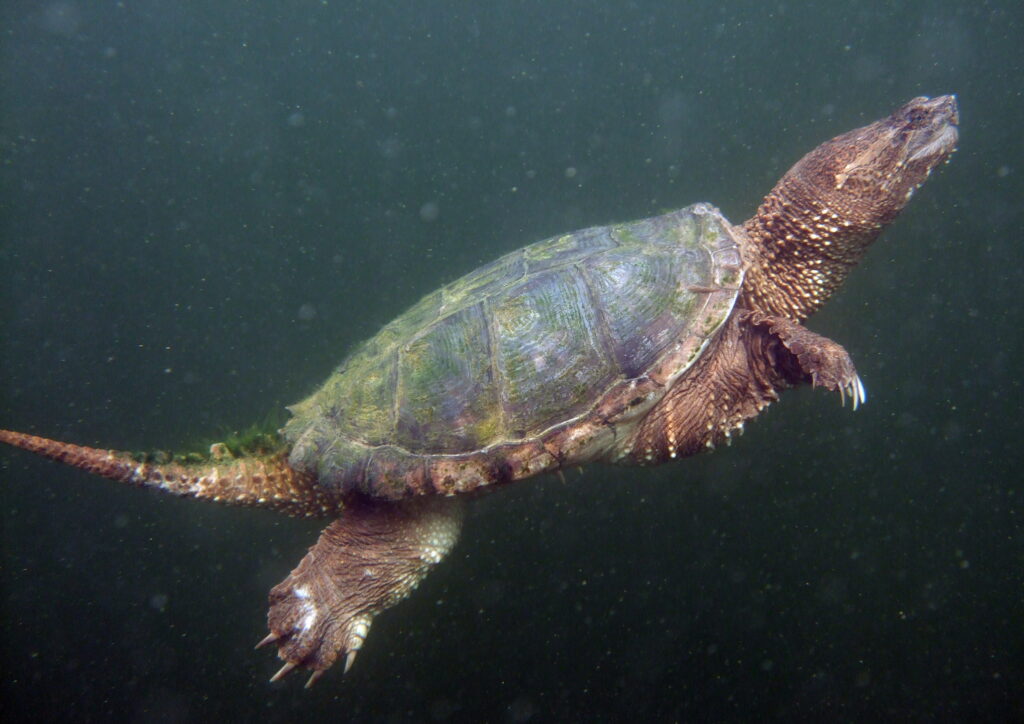

What should you do if you see a turtle on the road?
Find out in this video from the Toronto Zoo & Adopt-a-Pond:
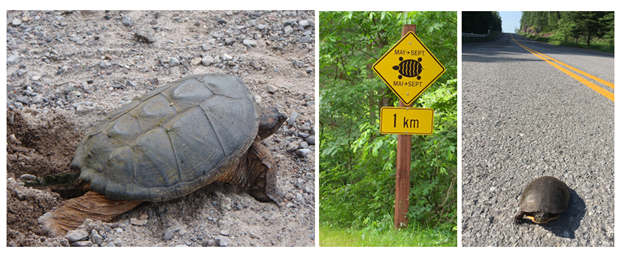

Please note: the following is archival material, and some links to third-party resources may no longer be active.
December 2023 – check out the latest Wildlife Conservation Society of Canada evaluation on the current state of biodiversity laws, policies & plans – and why they matter. Visit the website here.
January 2022 – a report has been issued with “Key Takeaways and Priority Actions” following the 2021 Ontario Biodiversity Summit (held virtually from May to October 2021). A main message: “healthy ecosystems sustain healthy people and a healthy economy.” Read the report (download PDF, 13 pages)
As part of the mandate of this group, every five years we produce a State of Ontario Biodiversity Report (SOBR). Read the latest SOBR report (download PDF, 18 pages).
Ontario’s Biodiversity Strategy guides conservation efforts across the province using four strategic directions that highlight the work we must do: Engage People, Reduce Threats, Enhance Resilience, and Improve Knowledge. Each of the strategic directions is supported by long term objectives, outcomes, actions, and targets. The indicators that are used to measure our “State of” are explained in detail and a useful background for understanding what is important and how we’re doing.
The latest biodiversity indicators show that there have been mixed results on progress towards achieving Ontario’s biodiversity targets.
July 15, 2021 – Restoring Aquatic Biodiversity: Audio recording featuring FOCA’s Executive Director (Aquatic stewardship session begins at 4:04). The natural aquatic biodiversity in Ontario, with 250,000 lakes alone, is a remarkable endowment. This full-day session, part of the Ontario Biodiversity Summit, consisted of 4 panels that evaluated the experience of sustaining natural aquatic infrastructure and restoring damaged ecological functions. Read more at 2021 Ontario Biodiversity Summit.
May 18, 2021 – How many people care about biodiversity and nature loss? Hundreds of millions and counting (Global Landscapes Forum)
January 25, 2021 – ‘Four Steps for Earth’ to Protect Biodiversity’ (EcoWatch)
The 4Rs are:
- Refrain: Avoiding negative impacts on nature
- Reduce: Minimizing the harm caused by any unavoidable impacts
- Restore: Acting to quickly counteract any harm caused to nature
- Renew: Working to improve damaged ecosystems.
September 15, 2020 – Today the UN Secretariat of the Convention on Biological Diversity released Global Biodiversity Outlook 5. An excerpt: “Humanity stands at a crossroads with regard to the legacy it leaves to future generations; biodiversity is declining at an unprecedented rate. None of the (2010) Aichi Biodiversity Targets will be fully met, in turn threatening the achievement of the Sustainable Development Goals and undermining efforts to address climate change. Solutions need to simultaneously address the conservation of the planet’s genetic diversity, species and ecosystems, the capacity of nature to deliver material benefits to human societies, and the less tangible but highly-valued connections with nature that help to define our identities, cultures and beliefs.” Read more on the 2020 UN report from the New York Times, and the Guardian.
August 31, 2020 – Involve local groups in protecting biodiversity, conservationists urge. (The Guardian) The “Edinburgh declaration”, urges leaders to work more closely with wider society.
June 21, 2019 – The revised Federal Fisheries Act (Bill C-68) gives the Department of Fisheries and Oceans (DFO) increased oversight of development activities and the management of fish and fish habitat. It restores prohibitions against the harmful alteration, disruption, and destruction of fish habitat, and should allow for better protection for biodiversity. The Act also has tools to repair past harm to habitat and helps depleted fish populations recover from impacts such as climate change, loss of habitat or other environmental conditions. Over the next year, there will be much work to do to rebuild the regulations under the new Act, set up the proposed public registry and more. For more information, visit the DFO Fisheries Act web pages.
May 2019 – Nature’s Dangerous Decline ‘Unprecedented’; Species Extinction Rates ‘Accelerating’. “Biodiversity and nature’s contributions to people are our common heritage and humanity’s most important life-supporting ‘safety net’. But our safety net is stretched almost to breaking point.” Co-Chair of the Assessment Prof. Sandra Díaz (Argentina), says: “The diversity within species, between species and of ecosystems, as well as many fundamental contributions we derive from nature, are declining fast, although we still have the means to ensure a sustainable future for people and the planet.” The Intergovernmental Science-Policy Platform on Biodiversity and Ecosystem Services (IPBES) is an independent intergovernmental body, established by member States in 2012. The objective of IPBES is to strengthen the science-policy interface for biodiversity and ecosystem services for the conservation and sustainable use of biodiversity, long-term human well-being and sustainable development.
April 2018 – Federal government not doing enough to manage risk of fish farms, environmental watchdog says. Canada also not on track to meet 2020 biodiversity targets, commissioner says in spring report. (CBC News)
April 2017 – Why you should put Ontario first while planting your garden (article by by thestar.com)
In 2016, countries around the world committed to Sustainable Development Goals (PDF, 24 pages), a universal set of 17 goals, with related targets and indicators, that United Nations member states will be expected to use to frame their agendas and political policies from now until 2030.
Acting on Climate Change: Solutions from Canadian Scholars (Input from Sustainable Canada Dialogues’ Scholars )
June 2015 – VIDEO: What future is there for global biodiversity? (Netherlands Environmental Assessment Agency)
August 2015 – The Ontario Biodiversity Council has released their 2015 “State of Ontario’s Biodiversity” Report. Find out how Ontario has been progressing on 45 indicators towards its biodiversity targets since the 2010 Report. Click here to download the PDF (12 pages)
May 2015 – FOCA participated in the 2015 Ontario Biodiversity Summit:
On May 21, 2015 FOCA’s Executive Director Terry Rees moderated a discussion at the Summit: “Stewardship Works – How landowners, businesses and agencies collaborate for biodiversity.” Read a summary of the event (PDF, 2 pages).
Titled, “Protecting What Sustains Us,” the 2015 Biodiversity Summit in Niagara Falls was a chance to learn more about the state of biodiversity in our province and what we are doing to protect it, to hear from engaging and informative speakers, learn about best practices from around the world, and share ideas to help focus future conservation efforts. The diverse program focused on conserving biodiversity, promoting sustainable use of natural assets and mainstreaming biodiversity in society.
An exciting part of the Summit’s “Mainstreaming Biodiversity” theme was getting our youth involved. Forty young adults from across Ontario participated in “Young Leaders for Biodiversity” – providing valuable inspiration for these future leaders, and many useful insights for building a stronger community of caring for our natural spaces and species.
For related topics, visit FOCA’s additional webpages:
Healthy Shorelines & Stewardship

